How to reduce power consumption in the kitchen? Features of wiring kitchen.
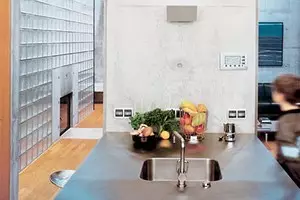
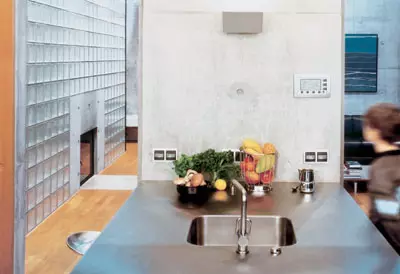
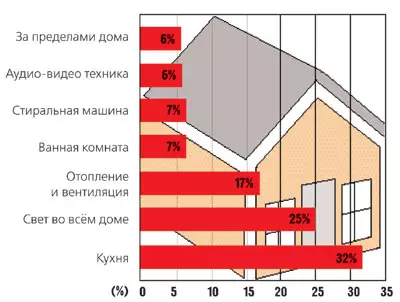
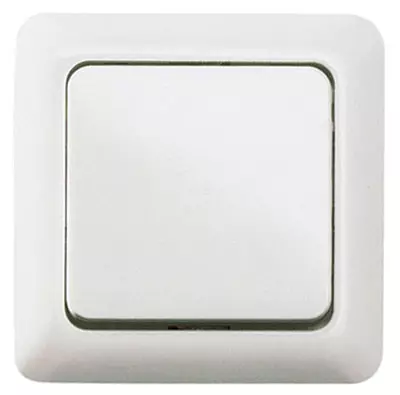
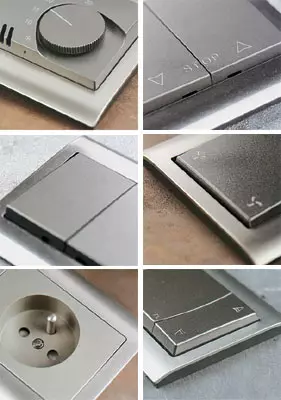
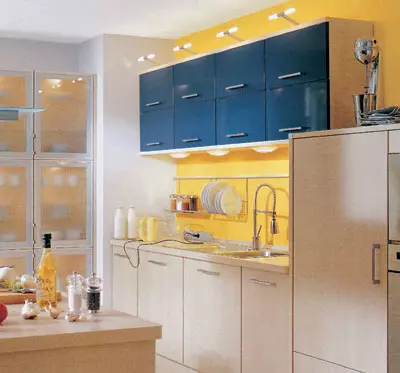
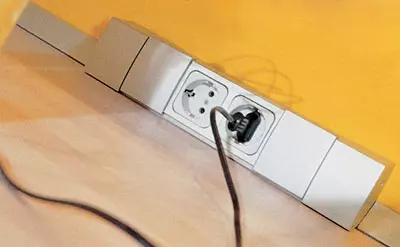
Ergonomic outlet location facilitates the use of kitchen electrical appliances
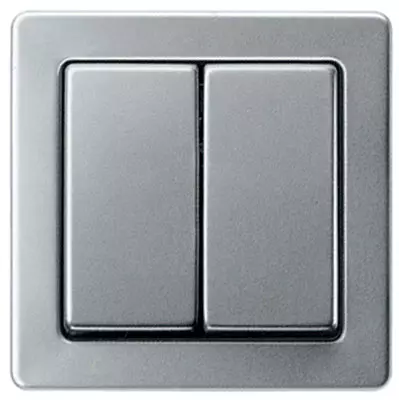
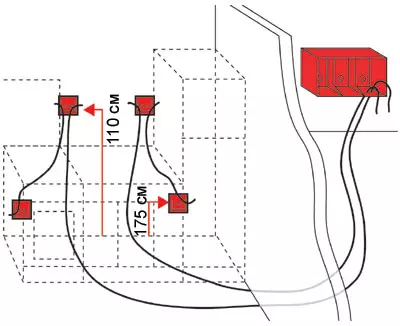
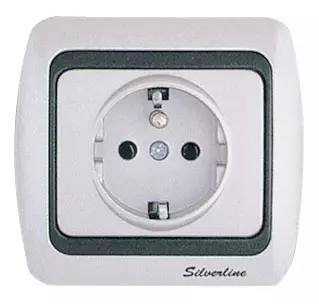
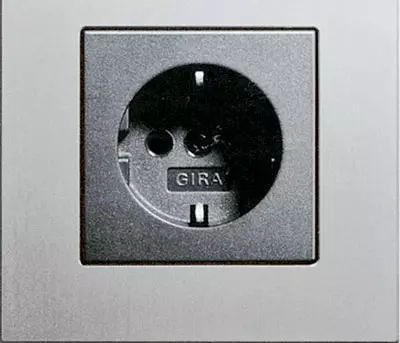
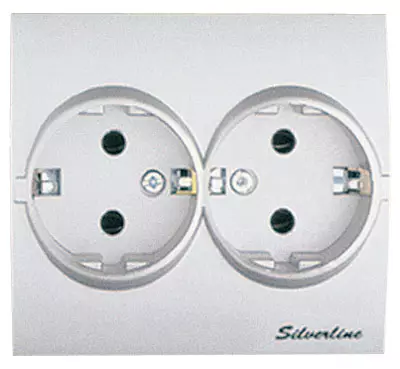
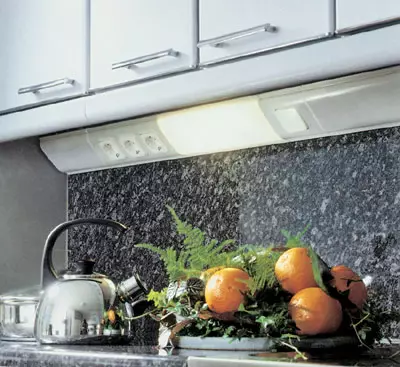

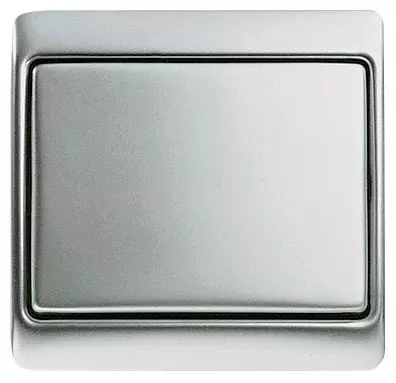
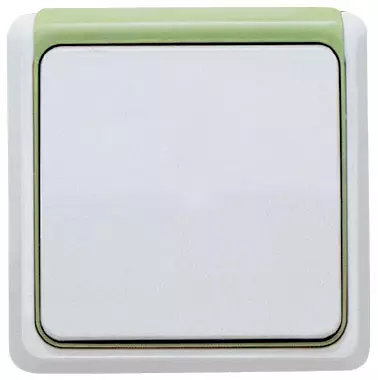
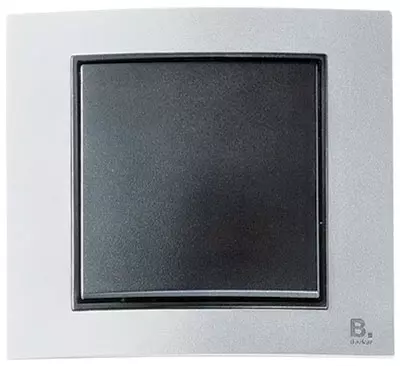
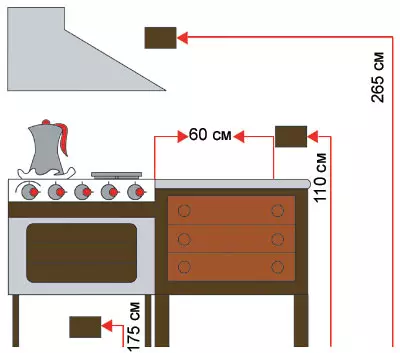
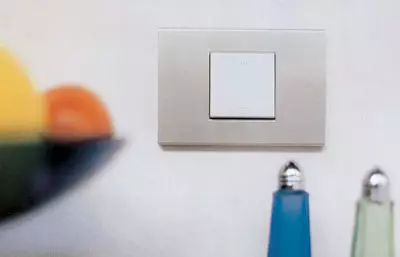
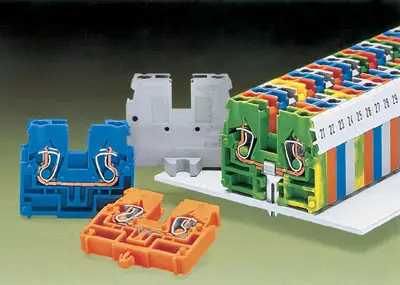
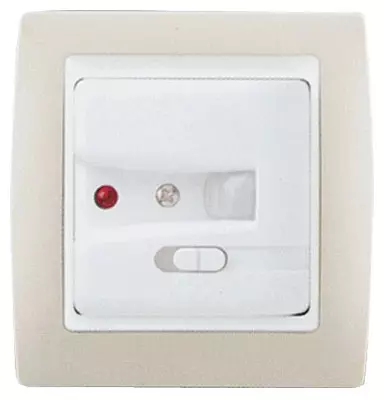
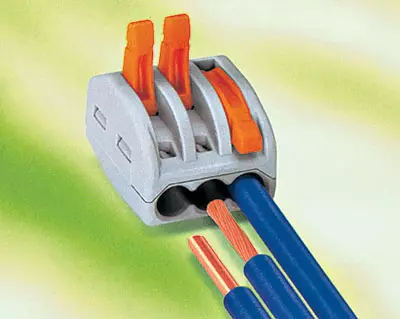
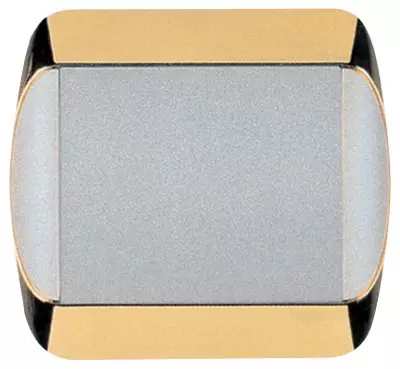
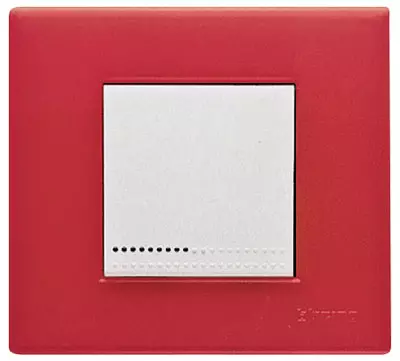
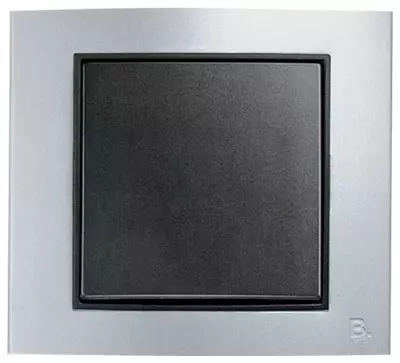
Compared to 1970, the consumption of electricity in the kitchen has grown twice and today is 32% of all energy consumption in the house. What electrical appliances are located in modern kitchen? How to use them right to ensure that the equipment is safe and served for a long time?
What is common between an electric member and a good mistress?
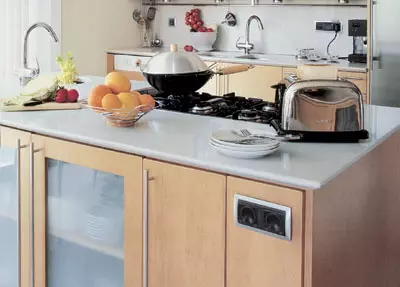
What electrical appliances are usually available in a modern kitchen, how long do they work during the day and how is electric load distributed between them? Consider the table.
It is not difficult to understand that the most energy-intensive kitchen appliances are plate, oven, washing machine, laundry dryer, refrigerator, freezer, microwave oven (with convection function or with combination mode) and water heater. If it is hypothetically to assume that these devices will be operated at the same time at the same time, the electrical installation of the standard apartment will not withstand and work the network protection automata from overload. Kschastina, the probability ratio of the simultaneous inclusion of all aggregates is 1/10.
Electrical appliances in the kitchen (comparative table)
| Electrical appliances | power, kWt | Duration of operation during the day |
|---|---|---|
| Toaster | 0.8. | 10 min |
| Coffee maker: | 0.8. | |
| Cooking coffee | 12 min | |
| Saving hot | 3h. | |
| Dishwasher | 2. | 2 downloads daily, 24 min for each washing cycle |
| Fryernitsa | 1.5 | 17 min |
| Teapot | 2. | 10 min |
| Oven | 2. | 2h. |
| Plate: | eight | |
| Large heating element | 1ch. | |
| Small heating element | 1ch. | |
| Refrigerator | 0.2 (compressor + lamp) | 7h (taking into account the time of shutdown using the relay) |
| Freezer | 0.2 (compressor + lamp) | 7h (taking into account the time of shutdown using the relay) |
| Microwave | 0.85 | 10 min |
| Microwave combined | 2.65 | 30 minutes |
| Rostr | 1.5 | 30 minutes |
| Flowing water heater | 2. | 30 minutes |
| Washer | 3. | 1.5H. |
| Dryer for linen | 3. | 30 minutes |
| Food processor | 0.4. | 15 minutes |
| Hood (ventilation) | 0,3. | 30 minutes |
By purchasing a new electrical appliance, think about how economical it is in terms of electricity consumption. According to European classification, there are several categories of power efficiency of electrical apparatus. The highest designated symbol, lower - G. Buying, for example, a refrigerator with an index instead of similar with the index, for ten years of operation of the device, you will save an amount equal to half of its cost.
Another way of savings is the correct use of instruments. Do not leave the open refrigerator door or freezer longer than it is necessary. At every minute of his stay with an open door, there are three minutes of the compressor to restore the desired temperature. Do not put a saucepan with hot food in the fridge, do not increase the ice in freezers: it leads to an increase in the operation time of the compressor.
Modern washing machines consume the energies half less than their prototypes of the 80s sample. Try to avoid washing with incomplete loading drum. Remember that washing at a temperature of 40С requires a third less energy than washing at a temperature of 60s.
Turn on only a fully loaded dishwasher and choose an economical mode of operation. This will reduce electricity consumption for about a third. Try to easily use the pre-washing cycle and strive to dry the dishes of the natural way.
Doing cooking, do not put a saucepan on the plate plate, greater than the diameter of the pan. Always use the covers: it will help you reduce the cooking time. Do not leave the oven open door for a long time to avoid unjustified heat loss. Boil water in the kettle, and not in a saucepan, and only the number that is currently necessary. Boiling four times on the day of filled with half the kettle, instead of complete, allows you to save electricity sufficient to view the TV for four hours. Do not use water heater for washing dishes and food under the jet of water. Pour water into separate dishes for this.

"The load of electrical receivers in the kitchens of residential buildings is calculated based on the specific electrical load of the current collectors of the apartments. The latter regulated by the joint venture 31-110-2003" Design and installation of electrical installations of residential and public buildings "(Moscow, 2004).
According to a new position, at least four sockets per current 10 (16) A are provided in the kitchen. It is allowed to install dual sockets on the current 10 (16) a. Electric stoves should be connected directly to the supply line, their connection is also allowed through a polarized plug connector. The distance from the sockets intended for stationary electric stoves and air conditioners is not normalized to the instrument data enclosures. It is forbidden to locate the sockets under and over the sinks. The distance from the housing of the stationary slab to the grounded parts of the sanitary equipment, steel pipes, water supply, washes and radiators are not regulated. "
How many outlets should be in the kitchen?
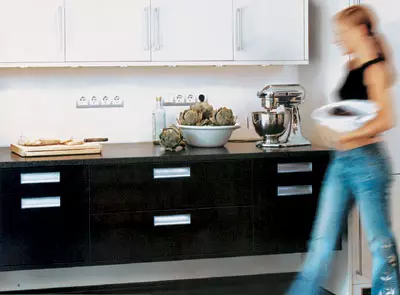
The number of outlets in the kitchen can be more installed according to the project. It all depends on whether the total power of existing electrical appliances permissible parameters or not. If it does not exceed (you have to prove it to the inspector of the power grid), then the partial reconstruction of the electrical installation of the kitchen is made without a special permission of the power supply organization. In contrast, it is quite difficult to get permission to install additional outlets.

"Unlike other types of compounds, spring terminals allow many times faster to produce electrical installation, they have a guaranteed reliable contact that eliminates short circuit and warming up at the point of the connection, provide protection against contact with the current-generating parts. Most fires and accidents related to electrical engineering occurs mainly due to improper installation and poor contact, therefore, the reliability of the compound must be treated with particularly seriousness. It should also be considered to be considered the surrounding conditions for the operation of cartridges, switches, sockets and electrical appliances included. In the kitchen, where, as a result of cooking, temperature, humidity and gas composition of air are constantly changing, unprotected screw contacts tend to accelerate oxidation. WAGO technical developments allow you to solve this problem at the present level. "
What wire does electricity come for?
It would seem what difference: take what the seller recommends on the market, and pull to sockets and light bulbs. It turns out that wire wires are dispersed. They are divided not only to aluminum and copper. First, the importance of their cross section plays an important role. To power the electrical appliances that consume a current up to 6a, there are enough copper insulated wires with a cross section of 0.75mm2. The microwave and washing machine are connected to the network through the copper wire with a cross section of 1.5mm2. For the power supply of such an energy-intensive apparatus, as a stationary electric stove (it can "eat" up to 40 (!) And at a voltage of 220V), a copper wire is needed with a cross section of 4mm2. Stationary electric stove laid in the project home is powered by a riser. The wire to it is pulled in the steel tube or in a corrugated metal sleeve. To enable the washing machine and the microwave furnace to the network, it is recommended to bring special outlets directly from the input and distribution device (apartment electrical panel). Conditions of the reconstructed apartment can be made by hidden wiring: the wire enclosed in the PVC corrugation is stacked in the stroke done in the wall; The socket in this case will also be hidden. It is much easier to use the modern option for open wiring, paving the wires to the electrical appliances in the cable channels, however, such a decision suits far from all connoisseurs of electrical aesthetics.
Secondly, the selection of the wire brand is due to the method of its gasket (hidden or open), the nature of the base (combustible or non-aggravated) and other factors. Recommendations for the choice of wires and cables for electrician specialists are given in reference books and electrical installation allowances. Definition of the brand of wires should be a professional.
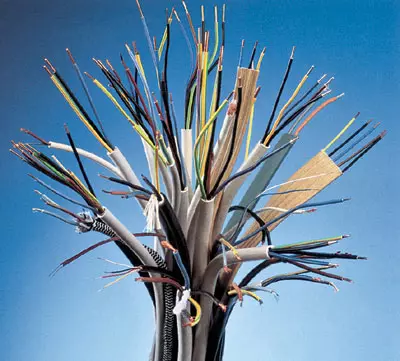
Circuit wiring, like housing as a whole, is performed only by copper wires with zero protective and working conductor wires can be used in the kitchen? The selection of wire brands is made taking into account the specifics of the kitchen as a wet room with an increased risk of electric shock. If the wiring is done in an open method on non-trade or hard-refined bases (plaster, brick, stone), as well as hot surfaces and structures (for example, in the neighborhood with a gas column or heating devices), then the Wires of the APV, APPV, APRA, APRI and them will be suitable Analogs of foreign production. When the wiring is carried out by a hidden manner according to non-aggravated or hard-fledged structures (in plastic, metal pipes, metalworks, it is insulated, that is, in a solid layer of non-combustible materials - in plaster, concrete), applied wires of APF, Apr., Apr and their foreign analogues. If the hidden wiring is made on flammable structures, then under the pipes are enthusiastic materials (sheet asbestos). Wires are recommended the same brands.
Wrong places and what routes are the wires? For the kitchen there are the same rules as for residential premises. They are regulated by SNIPA 3.05.06-85 "Electrical devices" (section "Laying of installation wires for construction grounds and inside the main building structures"). With a hidden laying of wires in thin-walled (up to 80mm), the partitions of the wire must pass in parallel to the architectural and construction lines. The distance of horizontally paved wires from the slabs of the overlap cannot exceed 150mm. Comprehensive constructions with a thickness of over 80mm wires are pulled along the shortest routes.
Moreover, pay attention to such, seemingly minor detail, like a connection of wires with each other and with terminals of sockets, switches, electro-trap. Wires are connected in water-distribution devices, in connecting and branching boxes, as well as in the terminal electrical installation products. Copper wires with a cross-sectional area up to 6mm2 were traditionally connected by a twist with a subsequent propagate lead-tin solder (or without any). Modern technologies will significantly simplify this procedure, ensuring reliability and quality of compounds. Protective caps can be installed on top of the twist, inside of which there is a conductive graphite lubricant that prevents the oxidation of contacts. You can do without a twist, using the development of German firms Wago, Fenix Contact and Swiss Woertz. Sports of WAGO terminals The connected wires enter the protective medium from the conductive lubricant. Despite the miniature form, these terminals firmly combine any wires with a cross section from 0.08 to 95m22.
Spring connections are increasingly used in modern sockets, switches, cartridges. Traditionally, the screw connections are predominated, where the copper conductor is attached to the terminal using a screwdriver screw. Such connections are reliable, but from time to time the screws need to "stretch" so that the contacts do not "spoke" and did not oxidize.
We believe, the reader will seriously react to our recommendations and will take advantage of them for the competent formulation of the problem before experts who are entrusted with the reconstruction (installation) of the electrical installation of the kitchen.
The editorial office thanks the company "Master-Electric", Wago and JSC "Royal Church" for help in preparing the material.
